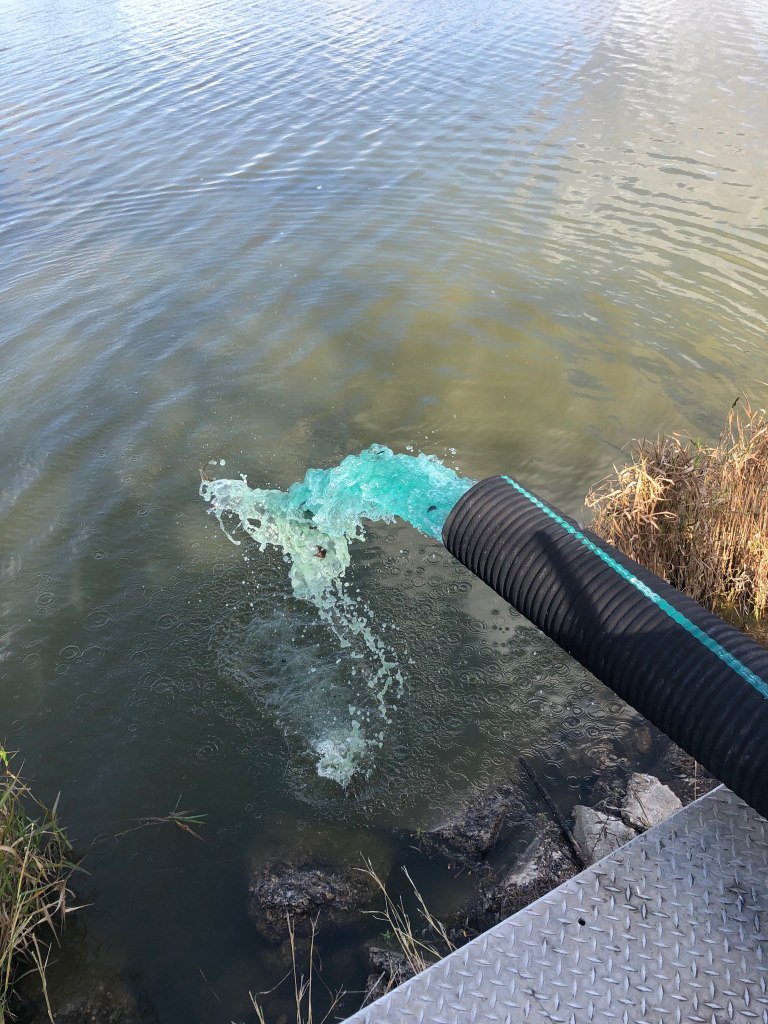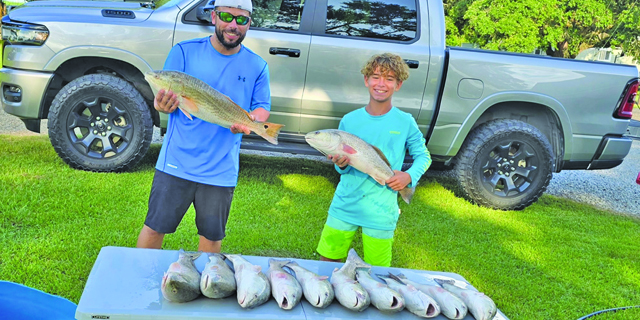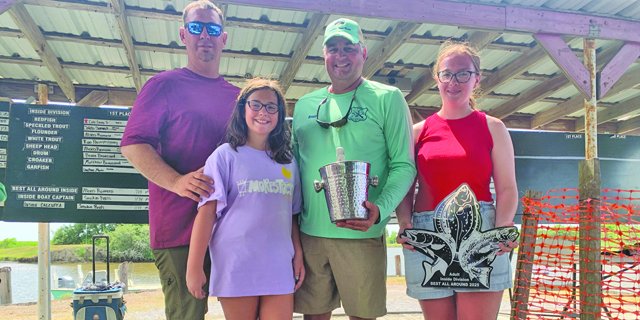Bass numbers at Spanish Lake climb considerably in ’19 & ’21
Published 5:00 am Sunday, January 29, 2023

- A hatchery truck releases Phase II Florida bass fingerlings in Spanish Lake in 2022. Nearly 6,000 bass averaging 8 inches long were released in January, November and December.
It’s been many years since “Spanish Lake” and “catching bass” have been mentioned in the same breath across the Teche Area.
Thanks to dedicated efforts from inland fisheries biologists with the Louisiana Department of Wildlife and Fisheries, the status quo just might change as soon as this year at Spanish Lake. The shallow lake alongside Louisiana 182 is in Iberia and St. Martin parishes just north of New Iberia.
Trending
Brad Launey of Ville Platte, who is in his first year as District 6 Inland Fisheries Biologist Manager, was involved in the stocking of nearly 6,000 Phase II (averaging 8 inches long) Florida bass last year in January, November and December.
“We stocked last year hoping we can keep bass numbers up for a few years at least,” Launey said Wednesday afternoon before leaving his LDWF office in Lafayette, pointing out 300 were released in January, 5,000 in November and another 457 in December.
What encourages Launey the most are the CPUE (catch per unit effort) numbers on bass from electrofishing samples conducted in 2019 and 2021. LDWF biologists shock fish in the water for 15 minutes each in four different areas.
He was amazed by the results for the bass population. The Fall 2019 CPUE on bass was an average of 23.9 per hour, with a substock (bass less than 8 inches long) at 4.
No electrofishing samples were taken in 2020 due to coronavirus-related concerns but resumed in Fall 2021. To Launey’s surprise, the Fall 2021 numbers on bass went from 23.9 to 92, “which is really good,” he said, adding biologists like to see 100 or better.
More importantly, the numbers for substock bass soared from 4 to 46.8.
Trending
“Going forward, I’m expecting it (bass fishing success) to even get better because we’ve started more stocking efforts for bass,” Launey said.
He said a few bass fishermen caught some bass at the lake over the past few years but apparently kept the catches to themselves.
“I’m expecting the ones that do (fish for bass) this year and next year to be pretty successful,” he said.
Spanish Lake’s 1,200 acres of water cover a silty, mucky bottom deemed by highly respected LDWF biologists from Gary Tilyou to Mike Walker to Jody David to Launey as unsuitable habitat for spawning purposes for gamefish such as bass.
A major project was undertaken in the mid-1990s to drain the lake in an effort to firm up the bottom. Three bird’s-foot levees also were built inside the lake near the northwest corner to reduce wave action that eroded the ring levee.
At a meeting last spring with the Spanish Lake Commission, Launey put draining the lake dry again (to improve unfavorable bottom conditions) on the table as an option. It was decided to continue stocking more bass to see how the lake treats them.
A Booker Fowler Fish Hatchery truck was scheduled to deliver Phase II Florida bass to Spanish Lake on Thursday. Launey said the number of bass to be released was unknown until the hatchery ponds were drained.
His LDWF District 6 office’s focus also has been trained on species other than bass at Spanish Lake.
“Over the last seven, eight years we stocked a lot of channel catfish, flathead catfish, hybrid striped bass, alligator gar and white crappie. The white crappie numbers took off real well,” Launey said, noting that white crappie historically fare better in turbid conditions than black crappie.
Following white crappie stockings during the mid-2010s, sac-a-lait fishing success climbed the past two or three years, he said. Plus, recruitment (an integral barometer used for stock assessment and fisheries management) numbers after the stockings are trending upward for sac-a-lait.
“Fishermen are starting to have more success and we’re getting more recruitment from the stocking effort,” Launey said about the sac-a-lait population.
Historically, the sac-a-lait spawn starts at any time now or early February.





